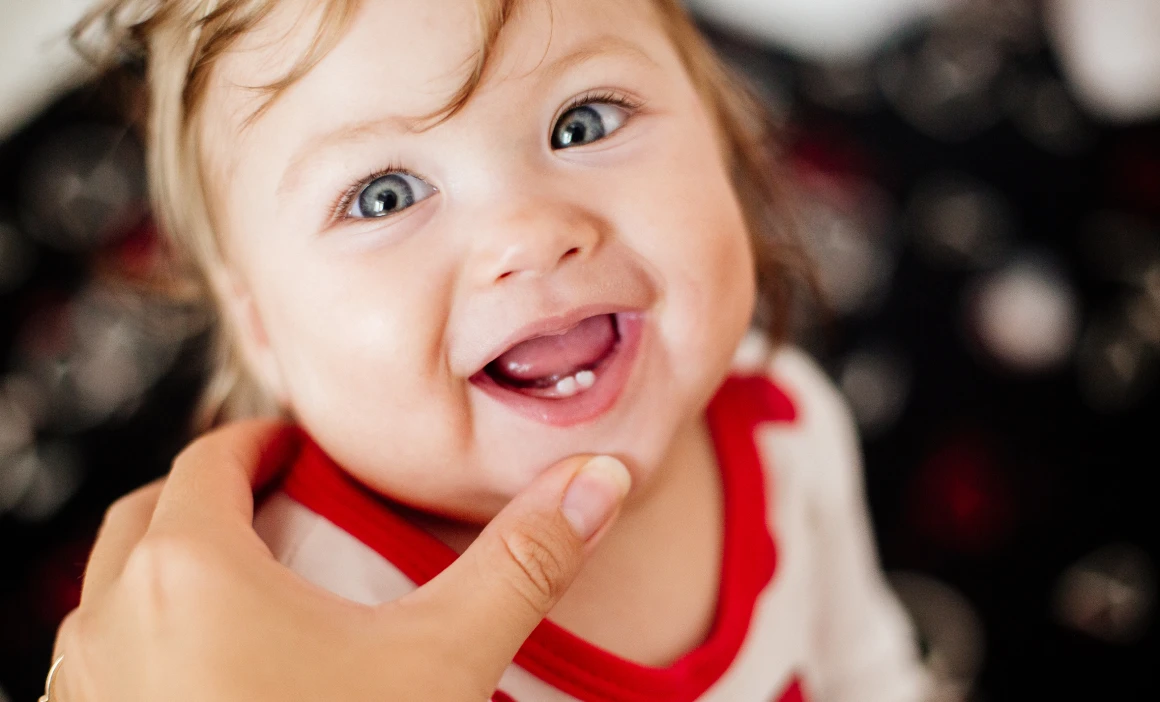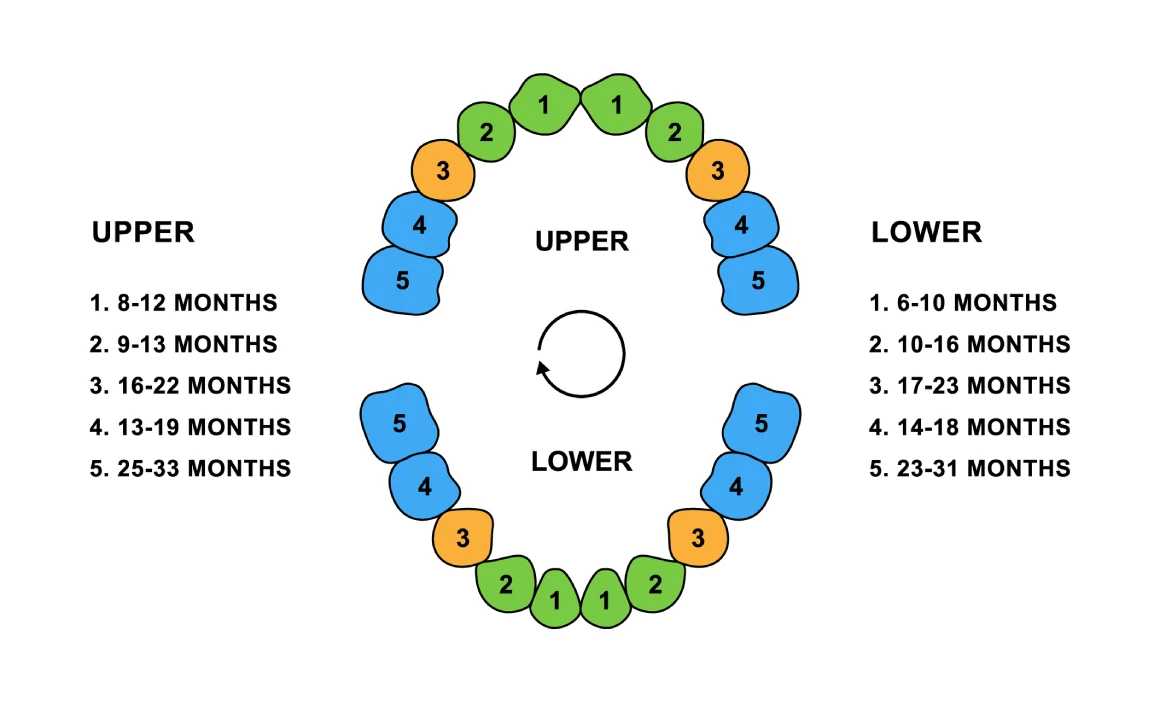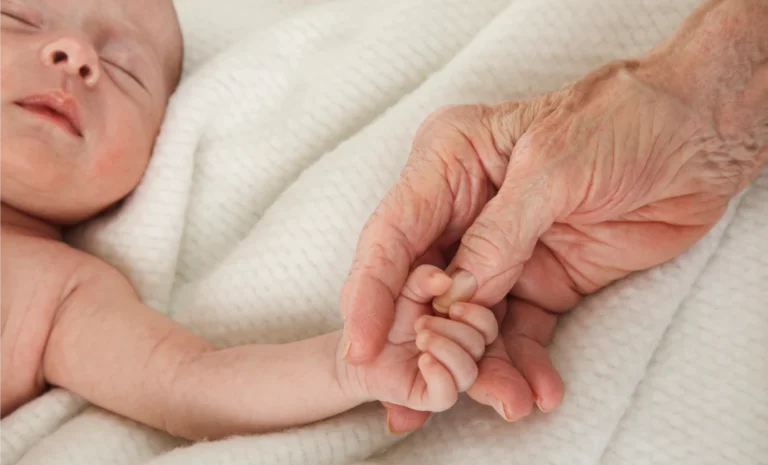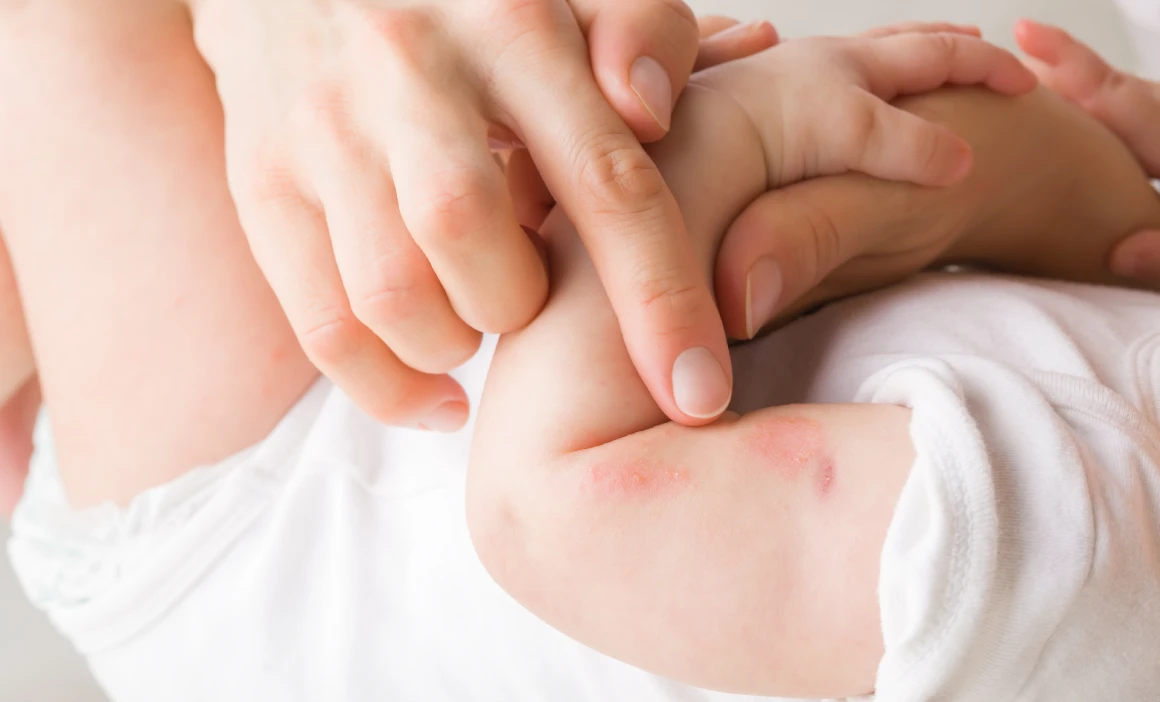
Infant Teething Guide: Symptoms, Soothing Tips, Brushing Advice & Why Baby Teeth Matter

Cradle of Nutrition
- 3 minutes read
What Is Infant Teething?
Teething is the natural process in which a baby’s primary (baby) teeth begin to erupt through the gums. This milestone usually starts between 4 to 7 months of age, but it can begin earlier or later depending on the child. By the time most children reach age 3, they will have a full set of 20 baby teeth.
Although exciting, teething can be a difficult time for both babies and caregivers due to discomfort and disrupted routines. Understanding what’s normal and how to manage it makes a huge difference.
Baby Tooth Eruption Timeline

Common Signs & Symptoms of Teething
While each baby experiences teething differently, the most frequently observed signs include:
- Drooling more than usual
- Swollen or sensitive gums
- Increased fussiness or crying
- Chewing on fingers, toys, or anything nearby
- Interrupted sleep patterns
- Decreased appetite or reluctance to feed
- Low-grade temperature (below 100.4°F / 38°C)
Important: High fever, vomiting, diarrhea, or a widespread rash are not typical symptoms of teething. These could signal an infection or illness and should be evaluated by a pediatrician.
Best Ways to Soothe a Teething Baby
Caring for a teething baby means offering comfort while staying safe. Here are safe and effective ways to ease teething discomfort.
Safe Soothing Techniques
- Cold Teething Rings: Refrigerate (don’t freeze) rubber or silicone rings to gently numb sore gums.
- Damp Washcloth: Let your baby chew on a clean, chilled cloth for relief.
- Gum Massage: Gently rub your baby’s gums with a clean finger.
- BPA-Free Teethers: Choose non-toxic, chew-safe toys designed for teething.
- Extra Cuddles: Sometimes, the best remedy is comfort from a parent.
❌ What to Avoid
- Teething gels with benzocaine or lidocaine: These are not recommended for babies due to the risk of serious side effects.
- Amber teething necklaces: These pose choking and strangulation hazards.
- Frozen objects: Ice can damage sensitive gum tissue.
(source: FDA warning)
Teething and Sleep: What Parents Should Know
Teething often leads to disrupted sleep. Babies may wake more frequently or be harder to soothe. To help:
- Stick to a consistent bedtime routine
- Offer a cold teether before bed
- Avoid creating new habits (like extra night feedings) unless necessary
If your baby is inconsolable or symptoms persist longer than a few days, consult your pediatrician.
Baby Tooth Brushing: When and How to Start
Dental hygiene should begin as soon as the first tooth erupts. Even one tooth can develop a cavity.
Brushing Tips for Babies:
- Use a soft-bristled toothbrush with a small head.
- Gently brush twice a day, especially before bed with plain water.
- Wipe gums twice a day with a soft, clean cloth.
- Talk to your dentist about the use of fluoride toothpaste.
For Toddlers (Ages 3–6):
- Use a pea-sized amount of toothpaste.
- Teach your child to spit out toothpaste after brushing.
- Supervise brushing until your child can do it independently—typically by age 6 or 7 (until they are old enough to tie their own shoelaces).
Why Baby Teeth Are So Important (Even Though They Fall Out)
It’s easy to overlook baby teeth because they’re temporary, but they play a critical role in your child’s health and development.
Here’s why baby teeth matter:
- They guide permanent teeth into the correct position.
- They help children chew and eat properly, supporting healthy nutrition.
- They aid in speech development, helping children form sounds and words correctly.
- Untreated cavities can cause infections, pain, and long-term damage to developing adult teeth.
- They support jaw and facial structure, preventing misalignment and bite issues.
When to See a Pediatric Dentist
The first dental visit should happen by:
- Your child’s first birthday, or
- Within 6 months of the first tooth erupting—whichever comes first.
This early visit helps:
- Detect any signs of decay
- Offer fluoride guidance
- Provide parents with advice on teething, brushing, and nutrition
How to Handle Teething Like a Pro
Teething is one of many phases in your baby’s first years—but it’s a significant one. By recognizing symptoms, using safe comfort methods, and starting good oral hygiene habits early, you can help ensure your child’s teething experience is as smooth as possible.
Remember:
- Start brushing with the first tooth
- Avoid risky remedies like benzocaine or amber necklaces
- Make baby dental visits a priority
- Treat baby teeth like they’re permanent—because their impact is.
Good oral health in early childhood leads to healthier smiles for life.
by Erika Barabás
Resources:






